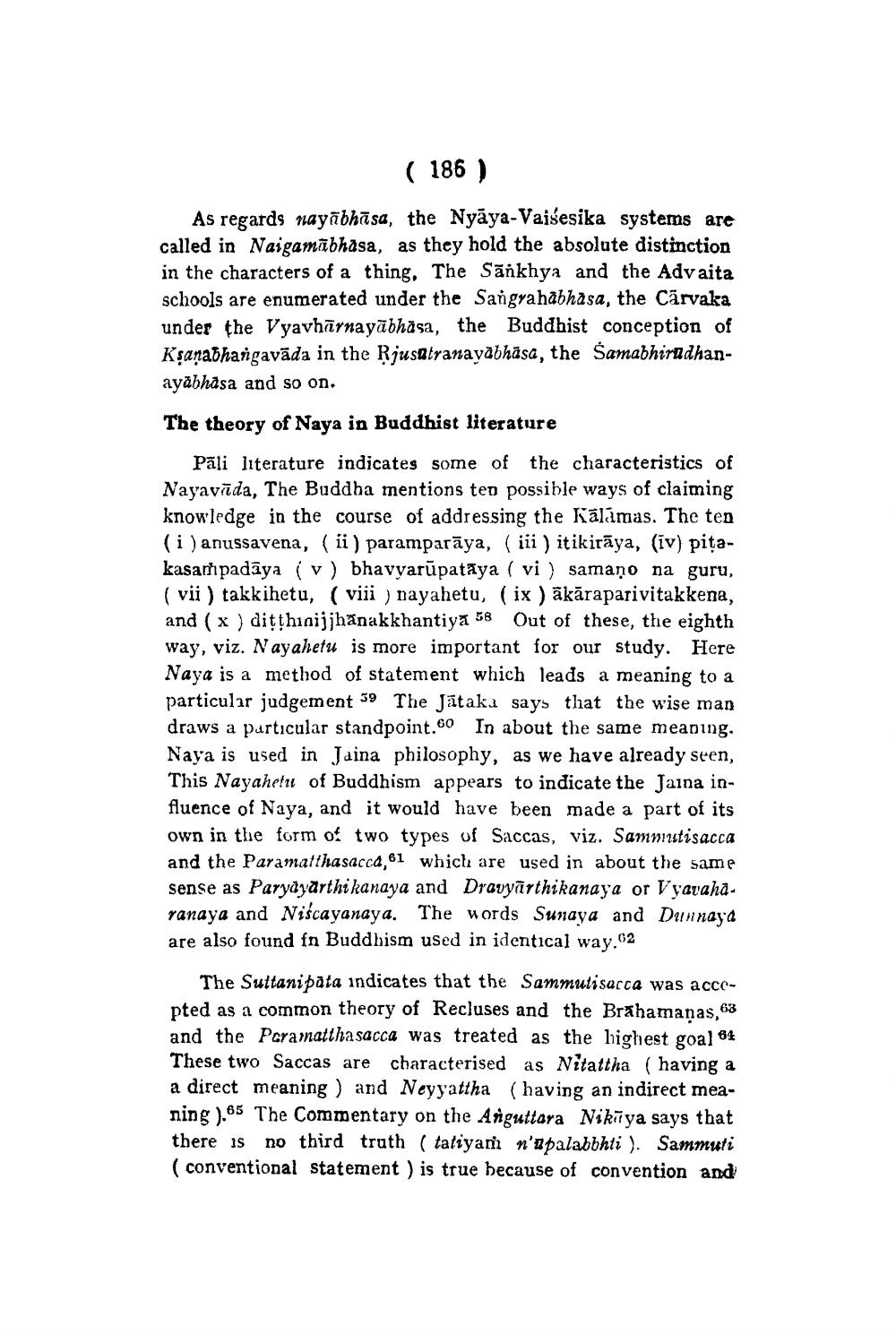________________
( 186 )
As regards mayābhāsa, the Nyāya-Vaibesika systems are called in Naigamūbhasa, as they hold the absolute distinction in the characters of a thing, The Sāňkhya and the Advaita schools are enumerated under the Sangrahābhasa, the Cārvaka under the Vyavharnayābhasa, the Buddhist conception of Kşanabhangavāda in the Rjusatranayabhäsa, the Samabhirndhanayabhasa and so on.
The theory of Naya in Buddhist literature
Pāli literature indicates some of the characteristics of Nayavīīda, The Buddha mentions ten possible ways of claiming knowledge in the course of addressing the Kālāmas. The ten (i) anussavena, (ii) paramparāya, (iii) itikirāya, (iv) pitakasaripadaya ( v ) bhavyarūpatāya ( vi ) samaņo na guru, (vii) takkihetu, ( viii ) nayahetu, (ix )ākāraparivitakkena, and ( x ) ditthinijjhanakkhantiya 58 Out of these, the eighth way, viz. Nayahetu is more important for our study. Here Naya is a method of statement which leads a meaning to a particular judgement 59 The Jātaka says that the wise man draws a particular standpoint.60 In about the same meaning. Naya is used in Jaina philosophy, as we have already seen, This Nayahetue of Buddhism appears to indicate the Jaina influence of Naya, and it would have been made a part of its own in the form of two types of Saccas, viz. Sammutisacca and the Paramatthasacca,61 which are used in about the same sense as Parydyarthi kanaya and Dravyarthikanaya or Vyavaharanaya and Niscayanaya. The words Sunaya and Dunaya are also found fn Buddhism used in identical way.c2
The Suttanipata indicates that the Sammutisacca was accepted as a common theory of Recluses and the Brahamanas,63 and the Paramattha sacca was treated as the highest goal 64 These two Saccas are characterised as Nitattha (having a a direct meaning ) and Neyyattha (having an indirect meaning ).65 The Commentary on the Anguttara Nikiya says that there is no third truth ( tatiyam n'apalabbhti ). Sammuti ( conventional statement is true because of convention and




